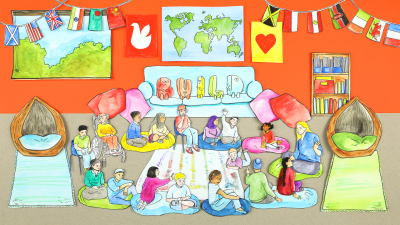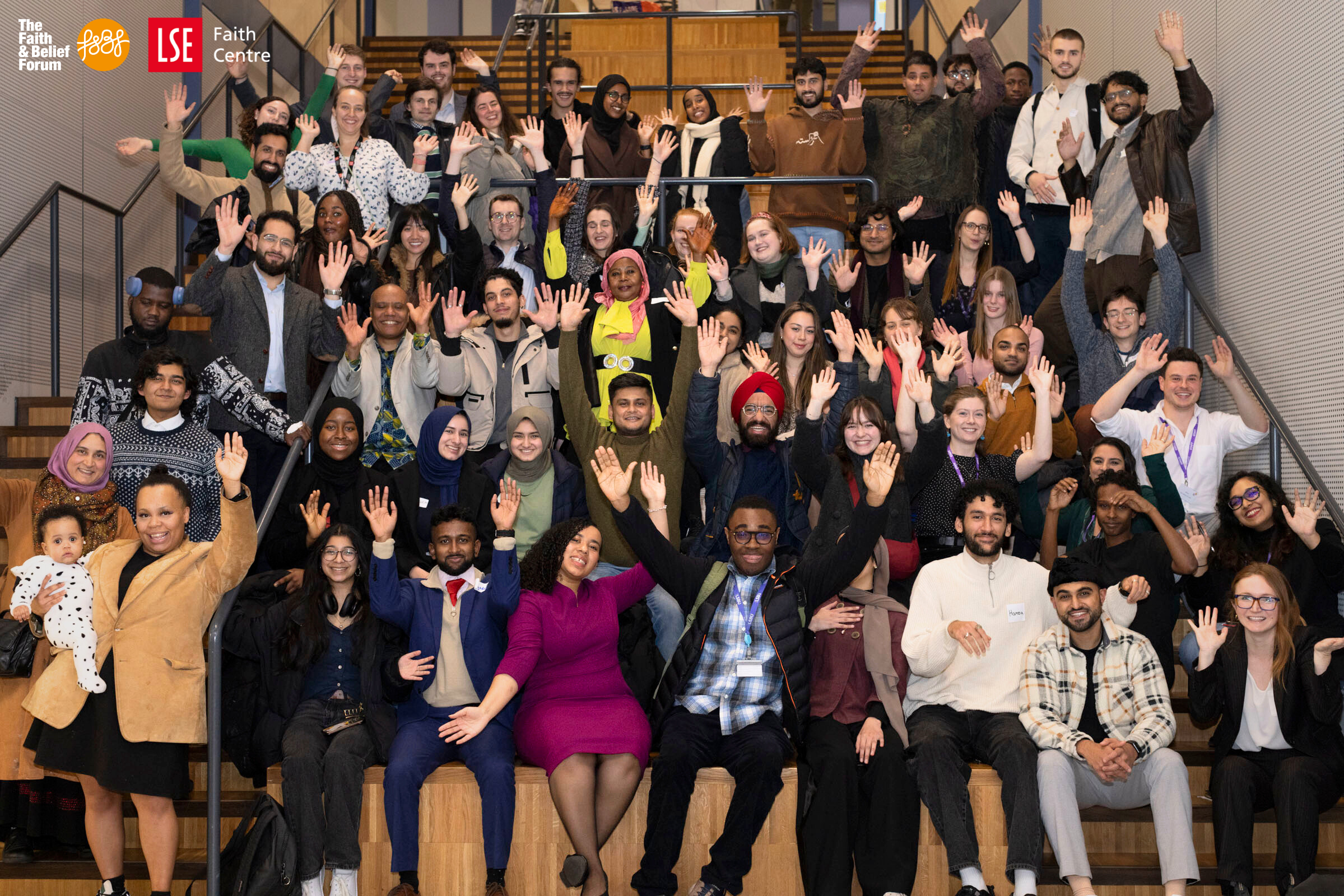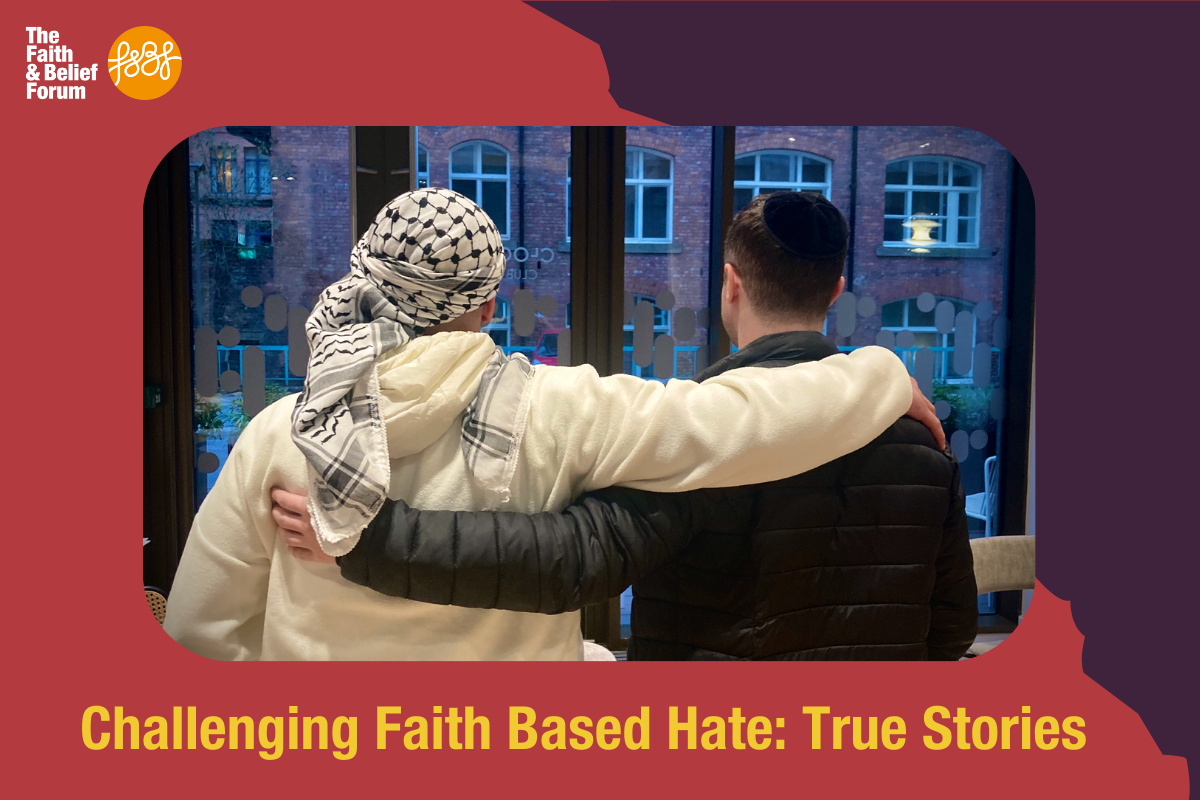
Statement on Hate Crime in UK – 19th February 2024
19 / 02 / 24
Menu

16 / 03 / 22
 Nida is a primary school teacher in a busy community school in South East London. Nida has been trialling F&BF’s new Skills for Dialogue online resources for primary schools. Here she writes about her experience of using the Safe Space lesson plans with her Year 2 class.
Nida is a primary school teacher in a busy community school in South East London. Nida has been trialling F&BF’s new Skills for Dialogue online resources for primary schools. Here she writes about her experience of using the Safe Space lesson plans with her Year 2 class.
Thanks to the team at Faith and Belief Forum for planning a comprehensive series of lessons for some of the really important conversations which hold great importance in enhancing the classroom environment positively. My class has really enjoyed the lessons and have greatly benefitted from discussing these topics explicitly. Here are some of the reflections from using these lessons with my Year 2 class over this Spring half term 2022.
Setting a Safe Space
L.O. I understand what is a safe space and I can contribute ideas to build safe space in my classroom.
The conversations planned for the activities in this lesson plan proved very useful in creating a good learning environment for my class. The class created a Class Charter together and felt that they owe responsibility towards each other and to their classroom culture.
The conversations in these activities have also trickled down into my classroom culture as a whole and sometimes when as a teacher, I need to reinforce the rules, then I only have to remind the children to look at the Charter (which is on display) and remember what they had agreed upon.
This lesson has been useful in terms of ticking a lot of boxes for my classroom like in PSHE, where we are tasked with developing aspects of pupil’s personality, having a display which is purposeful, having a more engaged and respectful classroom culture which research has proved to have a great influence on the learning for pupils.
B is for Being Respectful
L.O. I understand what are respectful behaviours.
The ‘R is for Respect’ lesson went really well with my Year 2 class and as a result of sharing their puzzle pieces in the ‘Class Jigsaw’ activity, I have seen that some children who were very quiet and did not have many friends, have now become more open to sharing their preferences and some of the children in this group are on the mental health register so it has proved very useful for them to have the confidence in sharing their opinions in a safe space.
To assess that the lesson objective has been met, I asked students to share their opinions about some scenarios that they were given. I chose to give my class four scenarios along with some multiple-choice questions, to assess the impact the lesson had on their understanding.
The recap activity was very useful and allowed the children to reflect on their actions and being mindful of their actions. The students were able to list lots of things that they had done last week to show respect to their peers, parents/carers and teachers. This reflective activity is also very useful to build a strong classroom culture of being reflective of our actions.
U is for Understanding
L.O. I can understand others by actively listening to them
The recap activity was very useful and allowed the children to reflect on their actions and being mindful of their actions. The students were able to list lots of things that they had done last week to show respect to their peers, parents/carers and teachers. The reflective activity is also very useful to build a strong classroom culture of being reflective of our actions.
I is for I statements
L.O. I understand how generalisations can cause misconceptions.
This activities in the ‘I is for I’ statements lesson made it easy for me as a teacher, to explain the meaning of the terms we were looking to explain such a stereotype, generalisations etc.
It made my class reflect on how generalisations can often cause misunderstanding because we are a part of a very multicultural community where our school is based. This also proved useful to cohesion and understanding of different cultures that children bring with them to the classroom. The children really enjoyed being part of clumps and also understood the objective of the activity.
The ‘What Does Generalisation Sound Like?’ activity has been immensely helpful in altering conversation styles for my pupils. They now have a better understanding of their peer’s lived experiences and their culture. Whilst, it is also important to note that the children in Year 2 are very young but by opening up conversations like these, it had a really positive impact on their understanding of other cultures and their peers who may be born in a different culture but also have so many similarities to them.
L is for Listening with your whole body
L.O. I can work on improving my listening skills
The silent lines activity was very helpful for my pupils to understand how difficult a task could be if they are not actively engaged. It made them ponder on the question about how sometimes things could be made easier just by actively listening and engaging in the task.
The assessment drip fed into another lesson that I had right after this activity and the student pointed out to me that he was sorry that he wasn’t actively listening to what I explained that meant that he wanted to have some more time to engage with the question. Overall, I think it’s a great activity to promote active reflections and getting the students to think about their learning in a metacognitive way.
I have advised F&BF that some children, due to SEN or other issues, find it difficult listening to others, for example, by making eye contact. So, I adapted this lesson to explain to the class that sometimes it may not be possible to be actively listening all the time and that some people may need things to be repeated to them, but we can all make efforts to do active listening.
D is for discussing and not arguing
L.O. I can practice having meaningful discussions.
During the activities in the lesson, we concluded that argument can be an unhealthy competition because having some sort of healthy competition with varied and diverse views can actually be helpful for discussions sometimes.
It has been very helpful for the pupils to explicitly discuss what a good discussion looks like. I also included some clips from parliamentary sessions for the children to get a first-hand view what good qualities purposeful discussions should have. The activity has helped my class to develop soft skills for good communication.
In our class we are still in the process of carrying forward this discussion in the next term and would like it to take to whole class discussion around issues that affect the school currently like school union etc.

19 / 02 / 24

16 / 02 / 24

16 / 02 / 24